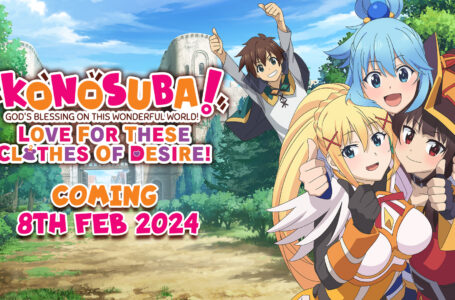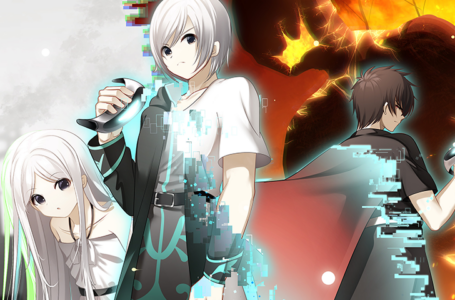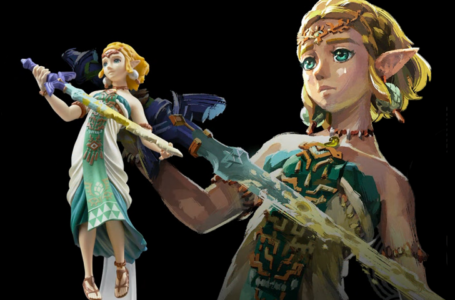Project Zero: Maiden of Black Water – a horror masterpiece gets a second chance
I’m so happy to see Project Zero: Maiden of Black Water again, even having played it pretty comprehensively several years ago.
Project Zero (or Fatal Frame, if you prefer) is, as we’ve fairly comprehensively established, very good indeed. It’s a survival horror series that does something genuinely different, and which has not, at any point, even considered changing its core formula in an attempt to appeal to a broader audience. Ever since its initial release twenty years ago, it has remained committed to providing the absolute scariest interactive Japanese-style ghost stories — and it ultimately provided us with five excellent games (and one slightly dodgy 3DS spinoff, but we don’t talk about that).
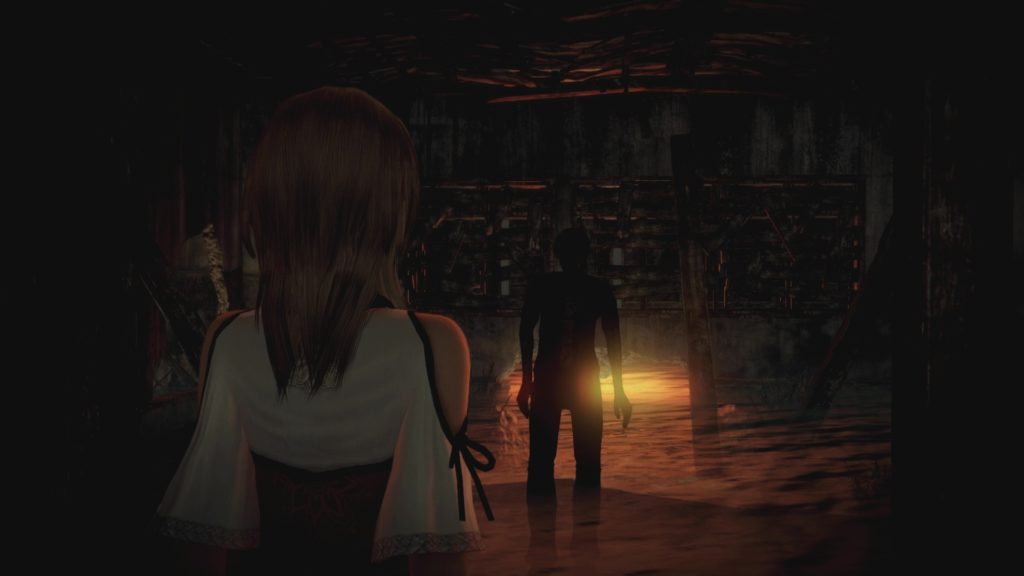
Project Zero: Maiden of Black Water, 2014’s fifth game in the series, was kind of doomed from the start, though. Not only was it a Wii U exclusive, it was an 18-rated game that came out relatively late in the console’s lifespan (i.e. when everyone had collectively decided it was a “failure”, despite it having some of Nintendo’s best games) — and one which only got a limited edition physical release in select territories. As even those without a Marketing degree will likely be able to point out, that is not how you get a blockbuster — and mediocre reviews that tended to miss the point a bit certainly didn’t help matters, either.
But that was then, and this is now — and Project Zero: Maiden of Black Water is back for another shot at success. And this time around, it’s available on absolutely everything. So now you have no excuse not to play this absolutely magnificent horror game and enjoy it to its fullest.
As we talked about when we explored the history of the series, Project Zero has always specialised in horror that has a distinctively Japanese bent. Specifically, it incorporates horror that draws from a combination of traditional folk tales, Shinto and Buddhist beliefs, and a healthy dose of artistic license; it’s part of a grand tradition of ghostly horror that, among other things, includes all-time classic Japanese horror movie Ring from 1998. And Project Zero: Maiden of Black Water is, of course, no exception.
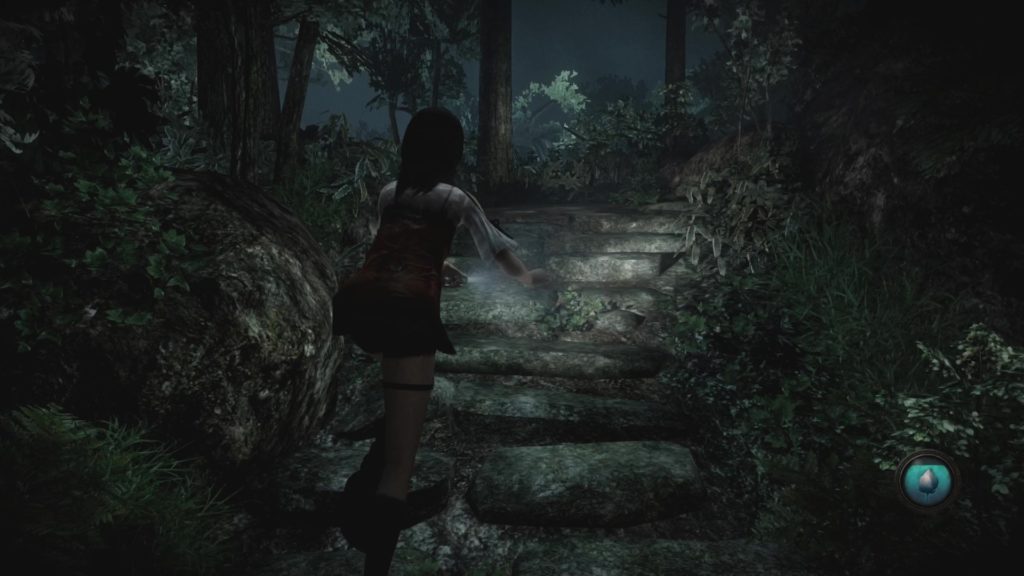
This time around, the narrative concerns Mount Hikami, a fictional locale that is likely based on a combination of the real-life mountain Mount Osore in Aomori Prefecture, and the Aokigahara forest, which is a notorious suicide spot. Mount Hikami has long been regarded as a place where the human world meets the hidden underworld, and as such it’s a bit of a spiritual hotbed — much like the central locations of all the previous Project Zero games also happened to be ghostly hotspots for one reason or another.
Not only that, it’s a popular place for people to go and kill themselves — which, as you might expect, did not work wonders for its attempts to become a tourist destination some 20 years prior to the game’s opening.
We join Project Zero: Maiden of Black Water as Miu Hinasaki, daughter of the original Project Zero’s protagonist Miku Hinasaki, has found herself spirited away to an unknown location, and is being pursued by restless spirits. The inevitable interactive tutorial causes her to end up trapped in a shrine atop Mount Hikami, and from here we take on control of main protagonist Yuri; as the game progresses, we also get to take command of researcher Ren Hojo and, once she’s rescued from her ordeal, Miu.
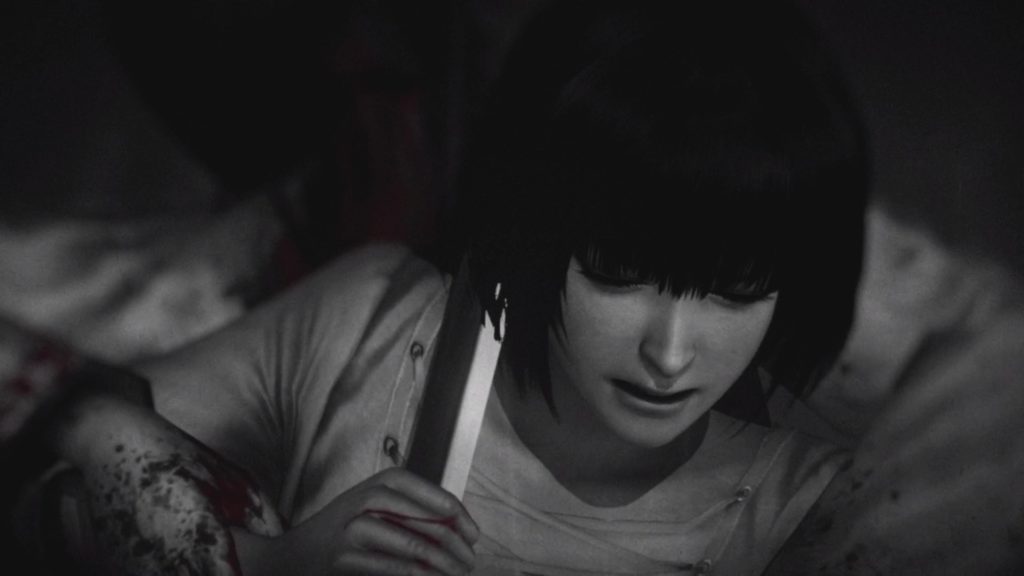
To say too much about the narrative of the game as a whole would be to spoil it, of course, but suffice to say for now that the idea of loneliness and giving up all hope on life is a central part of Project Zero: Maiden of Black Water. The game deals with some seriously heavy themes — up to and including people taking their own life for various reasons — and as such you should not go into this one expecting a particularly happy story.
That’s not to say there’s no positivity present in the game, however. In fact, a core theme of the game is “the difference a little warmth can make”; in the context this line is uttered, the characters are literally talking about a steaming cup of coffee, but it’s clearly also referring to the simple matter of human warmth and closeness — that most powerful of things that can stave off the terrifying feeling that is loneliness.
The game became somewhat notorious on its original release for its attractive female characters wearing eminently impractical-seeming outfits — plus the game’s use of Dead or Alive 5’s “wet skin and clothing” technology during the game’s many opportunities to get soaked through.
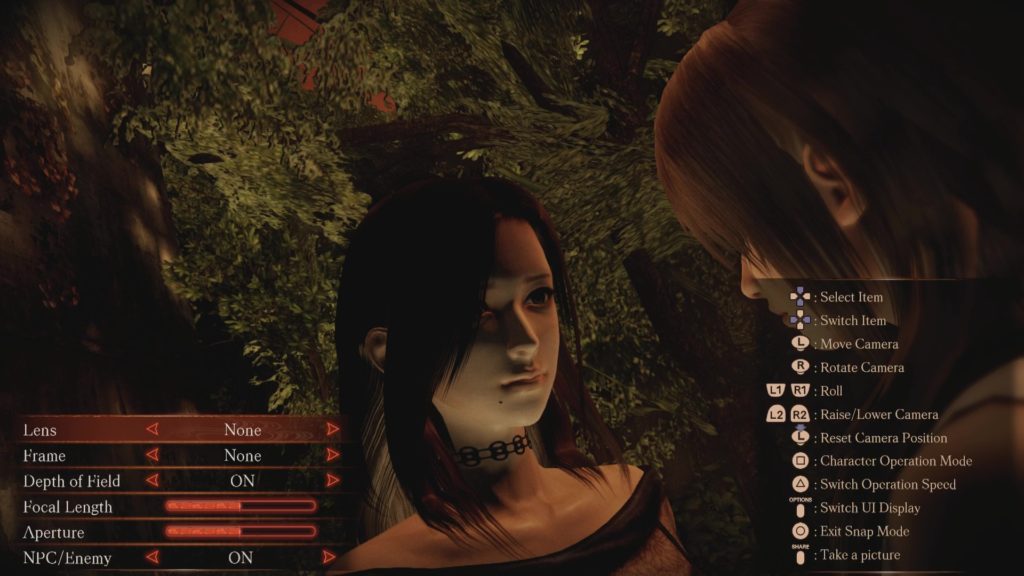
Interestingly, the more “sexy” side of things actually came about through Nintendo’s involvement with the original release of the game; according to series producer Keisuke Kikuchi, Nintendo’s Yuki Sakamoto was regarded as the unofficial “head of sexy” on the project.
“I think there are lots of people who aren’t so great with horror games and maintain a respectful distance,” explained Sakamoto in an interview for the game’s official guidebook. “So I hoped that the emphasis on the sexiness in the game will have acted as a gateway that makes people think, ‘this is scary, but I want to give it a go.'”
The sexy side of things is not at all out of place, either; good horror and sexuality are frequent bedmates, of course, and Yuri’s tale in particular in Project Zero: Maiden of Black Water is absolutely dripping with a sense of repressed sexuality as we explore the relationship between her and her guardian Hisoka. Who, it probably should be added, is probably one of the most painfully beautiful virtual women ever created for a video game.
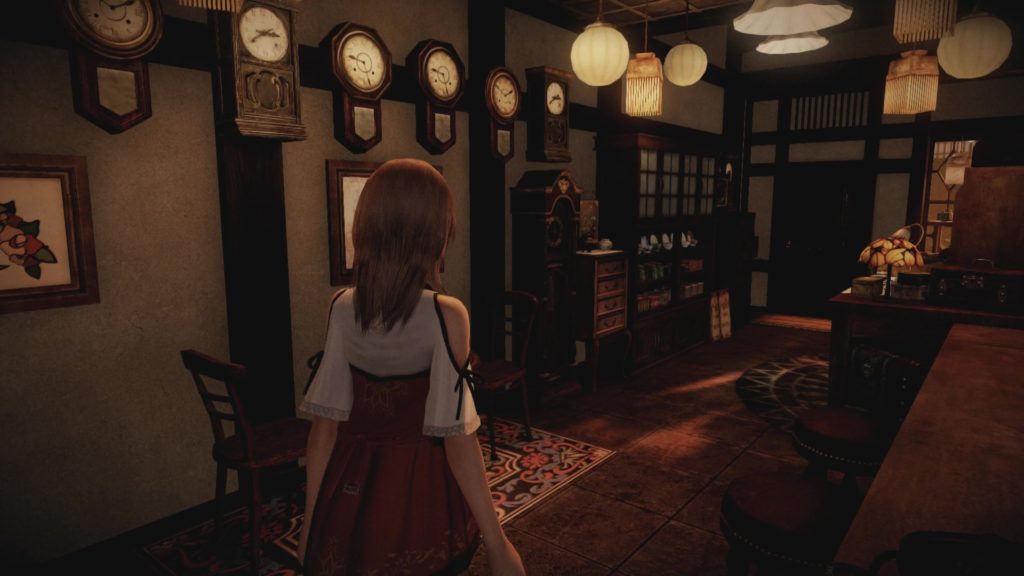
Hell, the word “yuri” is typically used to refer to girl x girl relationships in Japanese media — though it also sounds remarkably close to the Japanese word for the type of restless spirits we see in the game (yuurei). On top of that, one of the game’s on-screen indicators uses a blooming lily flower to represent one aspect of a character’s overall status — and the Japanese term for “lily” is, of course, “yuri”. You get the picture.
But enough about the narrative; there’s lots for you to explore and interpret for yourself over the course of Project Zero: Maiden of Black Water’s complete runtime, so let’s turn our attention to the mechanical and structural side of things.
One of the things that has always been nice about the Project Zero games is that despite their beautifully crafted artistic and narrative components, they’ve never once forgotten that they are video games. That means that they incorporate a number of self-consciously “gamey” elements into themselves that encourage you to explore the mechanics in the same level of detail that you might explore the story — though it’s worth noting that there’s also an “Easy” mode on offer for those who simply want to focus on the narrative.
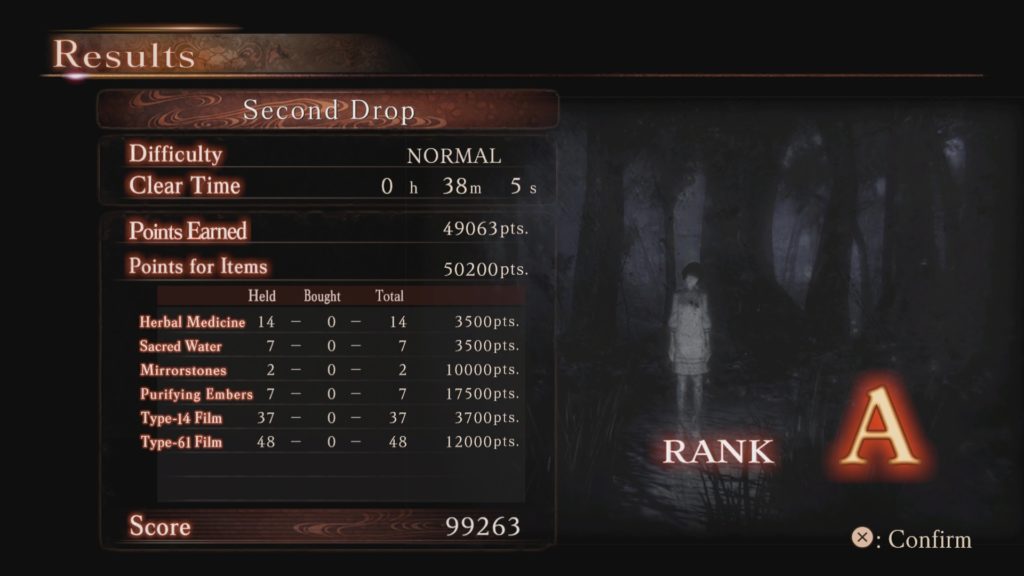
Project Zero: Maiden of Black Water is divided into a number of discrete, self-contained chapters, during which you play a specific character and have a particular goal to accomplish — though said goal isn’t necessarily clear from the outset of the chapter.
Prior to starting a chapter, you’re able to use the points you’ve scored in the game up until that point to purchase healing items and camera film (effectively “ammunition” for combat sequences) as well as various other handy bits and pieces. If you reach the end of a chapter with unused consumables in your inventory — including those you found during your exploration — you’ll get bonus points, too, so there’s actually a surprisingly strong emphasis on “score attack” as the game progresses.
Points aren’t just for show, either; they can be spent on various upgrades for the Camera Obscura that you use to fight off the series’ iconic ghosts. You can also upgrade the various lenses that you acquire over the course of the game, which provide special abilities for use in combat, and unlock a variety of costumes in which to dress the three main playable characters. There are plenty of things to spend them on, in other words.
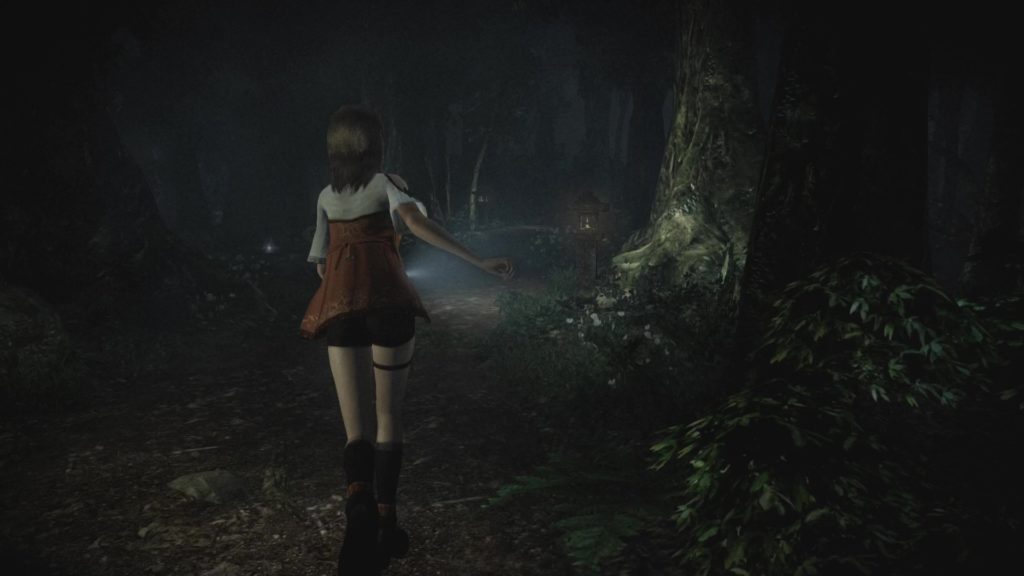
Once you’re into a chapter, gameplay unfolds from the same over-the-shoulder third person perspective the series used in its fourth installment and the Wii remake of the second game. Moving around might initially feel a little clunky and cumbersome compared to your average third-person shooter but this is, of course, entirely deliberate; a key part of classic survival horror is the feeling that the controls are slightly working against you, and that when you’re running away in a mad panic things only get increasingly stressful.
Thankfully, Project Zero: Maiden of Black Water doesn’t take things too far in this regard; once the game proper is underway after the initial prologue you’re given plenty of opportunities to get to grips with how the characters move, how you get around and how you track down the places you need to go.
One area where Project Zero: Maiden of Black Water differs a little from some of its predecessors is the diminished feeling that the entire game world is an interactive environmental puzzle. You’re not confined to a single creepy building as you are in most classic-style survival horror games, and as such there are a lot of sequences that feel much more “open” than many other similar titles.
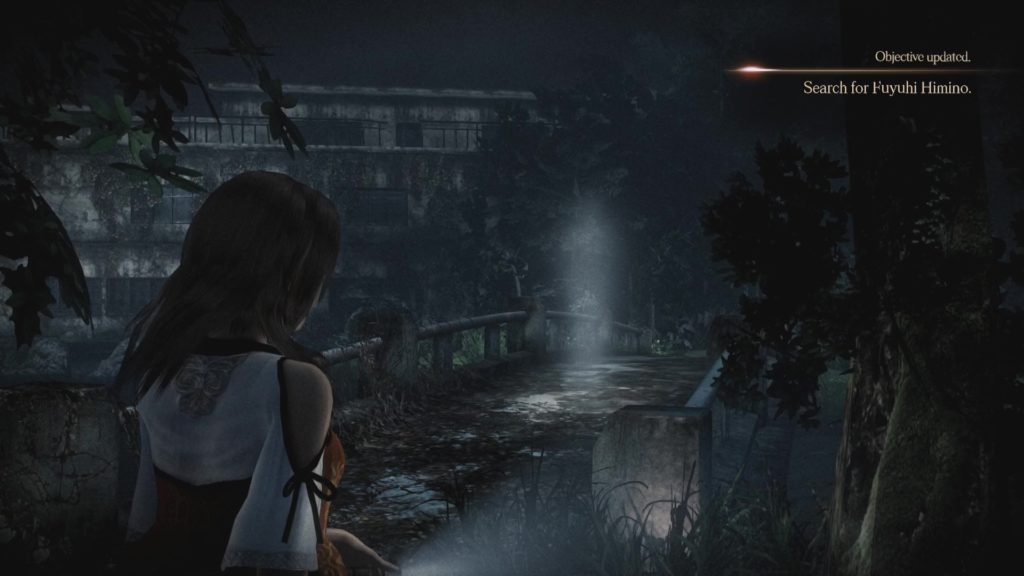
To help counter this — and simply to make progressing through the game more straightforward — protagonist Yuri has the ability to see “traces” of characters; by holding down whatever your platform of choice’s equivalent of a right trigger is, you’ll see a ghostly figure walking off in a particular direction, and you can follow it. You don’t have to do this, by any means — in fact, it’s often advantageous to wander off and search for items — but if you’re attempting to speed through a replay of a chapter for some bonus points it can serve as a helpful reminder of what to do next.
Project Zero: Maiden of Black Water also lacks traditional survival horror puzzles; instead, it places more of a focus on finding hidden objects and clues using the Camera Obscura. By photographing objects from the correct angle, you can reveal hidden items — or, in the case of locked doors or containers, determine where the key is hidden. The in-game justification of this is that there’s a “psychic imprint” of the object in question; practically speaking, it makes for interesting little navigation puzzles as you struggle to remember exactly where you saw, say, a dresser with a creepy doll on top of it.
Speaking of the Camera Obscura, for most platforms this is where the new version of Project Zero: Maiden of Black Water differs most significantly from the original Wii U version. That original Wii U version of Project Zero: Maiden of Black Water was designed to be played with the Wii U Gamepad, which acted as a second screen during gameplay, but which also literally became the Camera Obscura during combat and other photography sequences.
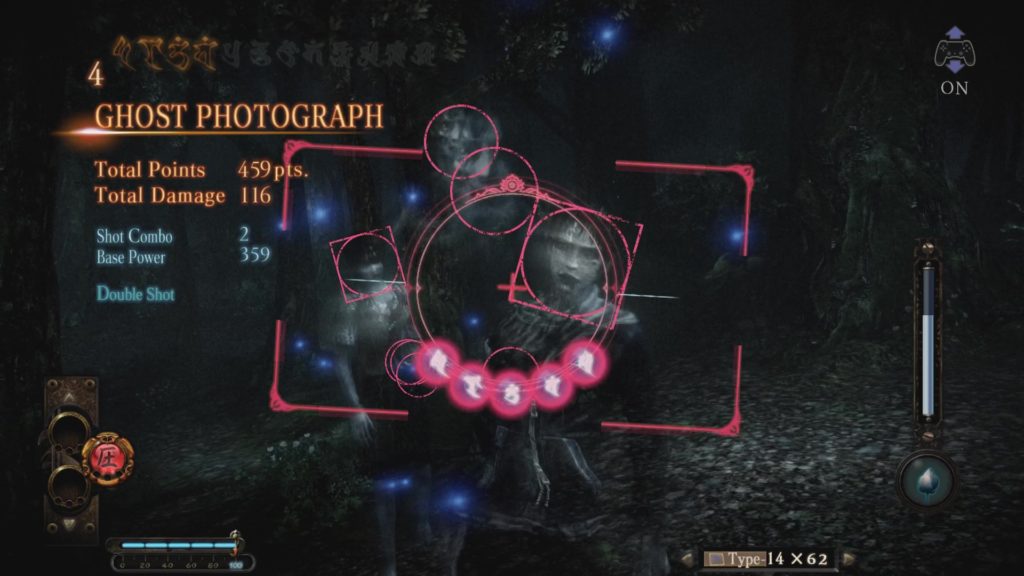
You’d hold up the Gamepad and aim at ghosts or other things you wanted to photograph, and physically move it to get things in frame. You could even turn right around and face the other way from the TV screen and the Gamepad screen would respond appropriately; it was a great example of the device being used for a sort of “augmented reality” feel.
You can still play the Switch version in handheld mode like this if you desire, but on other platforms things have been simplified a bit so you can take your photos with a combination of analogue sticks, buttons and, optionally, motion controls.
Pull out the Camera Obscura now and the viewfinder will appear on screen. You can aim it around with the right analogue stick and tilt it with the shoulder buttons, allowing for portrait or diagonal shots when necessary. Motion controls on compatible platforms can be used to move the viewpoint around too, though these can be turned off if you don’t get along with them. On the whole it works well and is a more than adequate substitute for the Wii U version’s way of doing things.
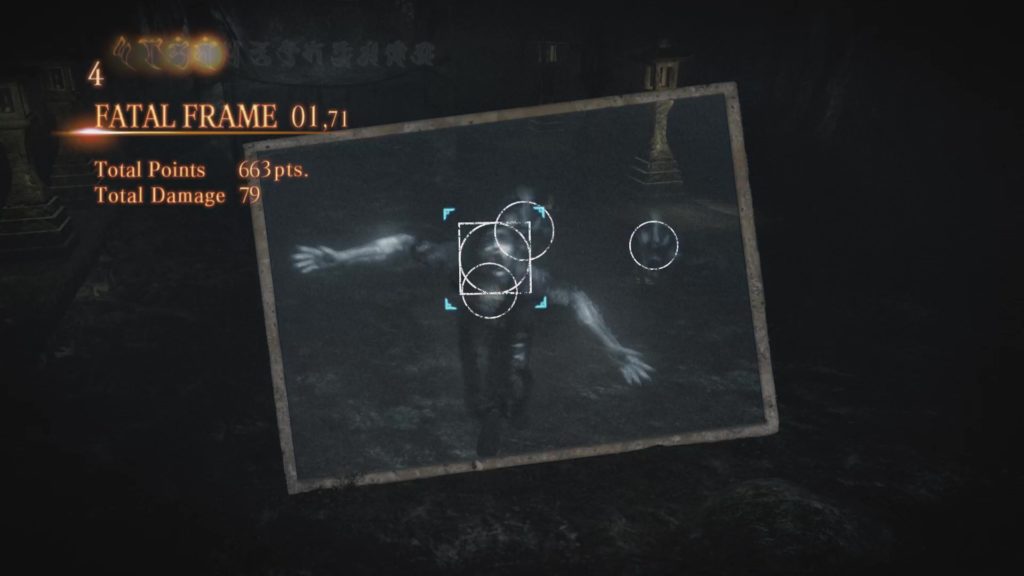
Combat in Project Zero: Maiden of Black Water differs a bit from the earlier Project Zero games in that it’s less about keeping a ghost in shot for a short period to charge up power, and more about getting as many targets in frame as possible. To that end, snapping a photo of a ghost causes “spirit fragments” to break off them, which each count as their own individual targets; snap another shot of the ghost with a bunch of spirit fragments floating around them and you’ll do significantly more damage.
As in previous Project Zero games, you can move around very slowly from a first-person perspective while wielding the camera, but there’s now also a “dodge” button that helps you to avoid damage if you time it properly. There’s also the “Fatal Frame” mechanic, whereby if you snap a shot while a ghost is attacking you (and the Camera Obscura is making a horrible noise that you will quickly come to associate with abject terror) you’ll interrupt their attack, knock them back and be able to snap several more shots immediately without consuming film or having to wait for it to reload.
A new mechanic for the series introduced by Project Zero: Maiden of Black Water is the “wetness” system, which is measured by the aforementioned “lily” gauge. Any time a character gets wet — which will happen frequently, given the regular rainstorms and sheer number of waterfalls scattered around Mount Hikami — they’ll be more prone to attracting ghosts to their location and will take more damage from supernatural attacks — but they’ll also deal more damage, so there’s an interesting tradeoff to be had there.
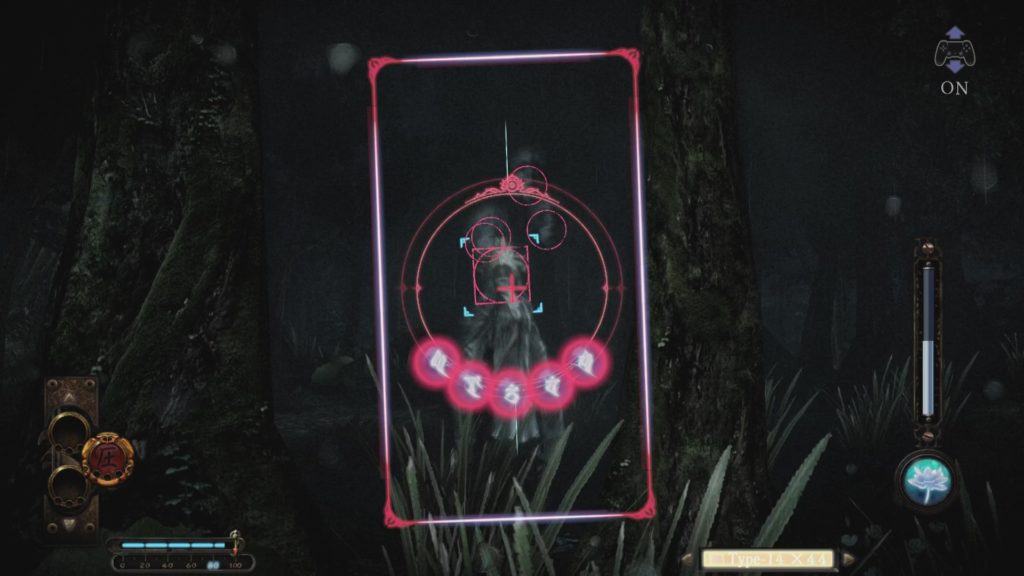
On top of that, when a character is wet they can get cursed, which blurs their vision, lowers their defensive capabilities yet further and gradually drains their health. So seek out that little bit of warmth that is so important, and dry yourself off if you want to stay safe.
Tying in with the game’s setting at a notorious suicide spot is the “Glance” mechanic, whereby some defeated ghosts hang around for a short period before dissipating — when this happens, you can reach out and touch them in order to see the tragic or traumatic events that led to their current incorporeal condition.
Rather delightfully, according to the creators, the deliberately lo-fi, analogue appearance of these scenes was created not through digital trickery, but through a clean version of the scene being dubbed onto a crappy old VHS cassette, the tape crumpled up, and then the messed-up tape being re-digitised back into the developers’ computers.
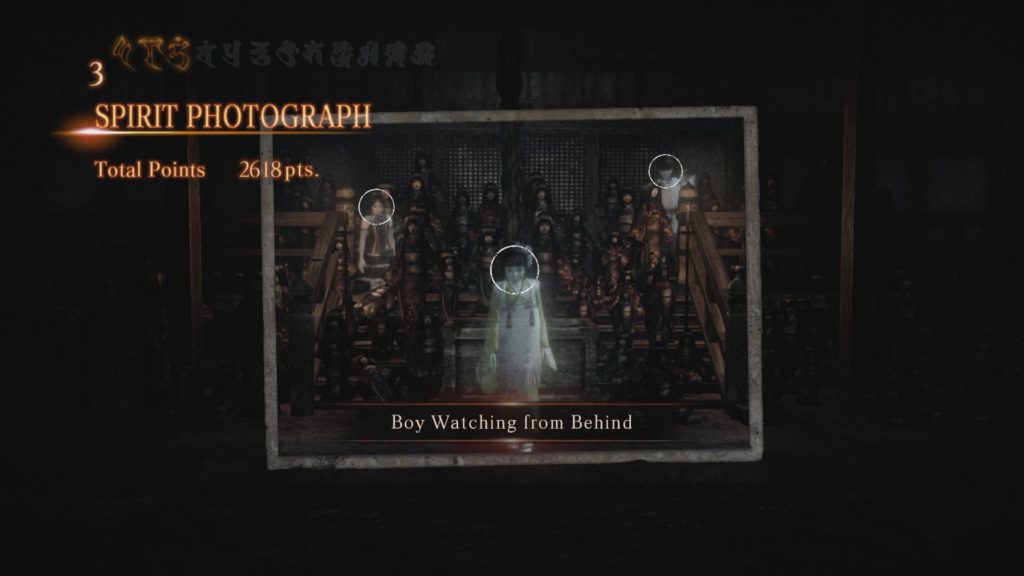
Between this feature and the series’ usual “Ghost List” mechanic, where you’re challenged to quickly snap shots of ghosts that are “echoes of the past” in order to add them to a collection, there’s plenty to do in Project Zero: Maiden of Black Water beyond simply working your way through the story; as noted above, despite this being an absolutely beautiful video game — and it really is beautiful — it never forgets about the “game” part of that equation.
And, on the other side of things, the whole narrative side of things is immensely satisfying, too — particularly when in the game’s final chapter you have the opportunity to choose the exact way in which several different story threads conclude. There are some fascinating questions to ponder and, in true series tradition, plenty which is left unsaid and left open to interpretation.
Project Zero: Maiden of Black Water is a truly wonderful horror game, and it’s a delight to see it finally available to a broader audience. Here’s hoping it does as well as it deserves this time around — perhaps well enough that we see at the very least a remaster of the earlier games in the series, and maybe even a new one sometime soon.
Project Zero: Maiden of Black Water is available now for PlayStation 4/5, Xbox platforms, Nintendo Switch and PC. Thanks to Koei Tecmo Europe for the PlayStation 4 review copy.
Join The Discussion
Rice Digital Discord
Rice Digital Twitter
Rice Digital Facebook
Or write us a letter for the Rice Digital Friday Letters Page by clicking here!
Disclosure: Some links in this article may be affiliate links, which means we may earn a small commission if you make a purchase after clicking on them. This is at no additional cost to you and helps support Rice Digital!
- Letter from the Editor: passing the torch - June 30, 2023
- Super Woden GP 2 is looking promising - June 30, 2023
- Inti Creates is making a 32 bit-style Love Live action platformer - June 26, 2023




